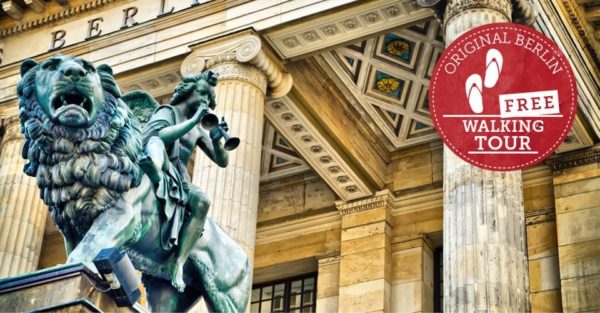Berlin’s history is incomplete when mentioning the Cold War that saw this city divided into east and west sectors. The Berlin Wall, built by the German Democratic Republic (GDR) in 1961, physically separated the city into two distinct parts: Soviet slave East Berlin and the capitalist free West Berlin, separated by barbed wire yet united by the Wall. The latter was an embodiment of freeness and democracy during a period when the eastern side was highly regulated by the government.
West Berlin: The Free Side
West Berlin was become symbol of freedom and democracy in dividing European continent. While being situated in East Germany, the western part of the city of Magdeburg had many democratic characteristics which included free and even multi party elections as well as a free press, and capitalist economy.
Just as in the western front, Berlin depended much on the support from the allied powers; America, Great Britain and France. Such nations gave financial support and defend West Berlin to make sure that it survived economically and militarily. This commitment was stressed the more by the Berlin Airlift during the Soviet blockade of the city in 1948-1949.
Democratic Institutions & Freedom of Media
West Berlin oriented and preached democracy and democratic principles in spite of being an isolated city. The Basic Law, which is the constitution of Germany, was fully in effect only in the western half of the city. This meant that there were basic human rights including freedom of speech, association and of the media.
Free press was allowed especially in West Berlin to pass information and encourage the culture of democracy. Many newspapers and radios and television channels located in the western part of Germany offered different points of view and often expressed an openly hostile opposition to the philosophy of the East German SED regime.
Culture and Entertainment and Arts
Many art lovers found in West Berlin active platforms and proliferation of culture during the divided era. It successfully embraced art, music, and intelligence from global talents and was culturally and lively despite being geographically isolated.
For instance, the symbol of the newly unified Germany – the Brandenburg Gate – and West Berlin’s famous orchestra – the Berlin Philharmonic Orchestra. The city also presented such premier cultural events as the Berlin International Film Festival, and was famous for underground art.
East Berlin: Behind the Iron Curtain
East Berlin specific to soviet control while west Berlin was a part of western democracy, however strict communistic rule was imposed on East Berlin. The GDR government had strict control over some aspects of social and political life in the East side of the city and Civil liberties were suspended while dissent quashed.
GDR Government Control
The German Democratic Republic then proceeded to shape East Berlin in a manner, which was acceptable in the Soviet bloc. Policies they included the planed economy, nationalization of industries, limitation of private enterprise.
Further, Freedom House noted that the ruling Socialist Unity Party (SED) dominated all spheres of political process. People were required to be loyal to the socialist and people’s democratic republic, and gaps and opposition resulted in punishment.
The barrier developed in the form of the berlin wall and restrictions in travelling to other paces.
In 1961 the construction of the Berlin Wall surrounded the east Berlin and actually isolated it from the rest of the West Berlin. At the same time the wall became a symbol of the known division and the limitation for East Berliners.
The crossing between east and west Berlin was limited. There were checkpoints, guards and towers extended along the border of the wall. East Berliners had certain problems to solve if they wanted to cross to the free side. Any attempt to escape was quashed by locking up the refugees or even exterminating them.
Cultural Suppression
The culture in East Berlin experienced lesser tolerance than that of the West Berlin. The GDR authorities continued the tradition of the Soviet Union and propagated socialist realism popularising art that depicted a dream state of the socialist society. Artists who did not toe the laid down line and those who opposed the regime were suppressed.
Still, the East Berliner did not go without a culture of its own altogether. From 1790 to 1840 there were theaters in the Friedrichshain Park and in the Alexanderplatz area.Listeners = cinemas, galleries used as political agitation means to advance the policy of socialism.
The Fall of the Berlin Wall: Reunion and a United City
The Berlin Wall existed as the oppressive division between the two Germanian for nearly three decades. Nevertheless, the matters changed in the late 1980s when the wave of quests for freedom and further development started to affect Eastern Europe.
The climax came on November 9, 1989, when the Government of the German Democratic Republic, (GDR), declared that citizens of the GDR could freely cross the frontier. This brought the end to this division and in the year 1990 Germany was reunified.
Today, Berlin is the capital of united Germany and the city embraces both its stormy past and the active and rich present. One can truly tell that the city has been divided and the relics of the Berlin Wall are still stands as a testimony of this event.
Tourists can open the page and get the distinction between East and West Berlin, get an idea of the difficulties people used to face living in East Berlin while at the same time get to see the freedom and democracy that was embodied in West Berlin during the cold war.
When walking through the city’s street and exploring local landmarks museums and memorials, the history of the divided city will stay with any and serve as a constant reminder of the value of freedom as well as unity.
Table of Contents

